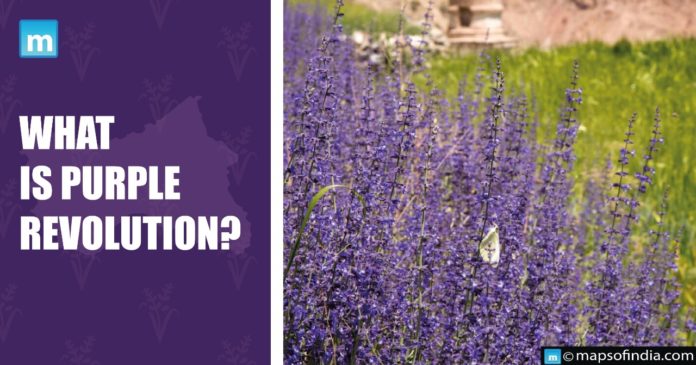Recently, as part of the Purple Revolution, the Council of Scientific and Industrial Research (CSIR)-Aroma IIIM’s Initiative will begin lavender cultivation in the Ramban district of Jammu and Kashmir.
CSIR is a modern research and development organization under the Ministry of Science and Technology. The Union Ministry of Science and Technology initiated the Purple Revolution or Lavender Revolution in 2016 through the Aroma Mission of the CSIR. Lavender farming is done in nearly all of Jammu and Kashmir’s 20 districts. First-time producers were offered free lavender seedlings as part of the goal, and those who had previously produced lavender were paid Rs. 5-6 per plant.
The goal of the Purple Revolution
- The goal is to promote the indigenous aromatic crop-based agro-economy by shifting from foreign aromatics to homegrown kinds.
Commodity involved in the revolution
- Lavender oil is the primary commodity, which costs a minimum of Rs. 10,000 per litre.
- Incense sticks are made from lavender solutions extracted from lavender oil.
- The hydrosol produced following flower distillation is used to manufacture soaps and room fresheners.
Relevance of the Mission
- It is significant since it aligns with the government’s objective of doubling agricultural earnings by 2022.
- It would provide a livelihood for aspiring farmers and agri-entrepreneurs, as well as strengthen the Start-Up India programme and encourage an entrepreneurial spirit in the region.
- Over 500 young people benefited from the purple revolution, which eventually led to the doubling of their income.
What is Aroma Mission?
- The Aroma Mission aims to bring about a revolutionary change in the scent sector by targeted interventions in agriculture, refining, and product development, hence fueling the expansion of the aroma sector and rural employment.
- The mission will strengthen the development of aromatic crops to produce essential oils in high demand in the scent sector.
- It is anticipated that it would allow Indian farmers and the aroma business to become significant players in the manufacturing and exporting other essential oils in the menthol mint pattern.
- It attempts to bring significant benefits to farmers by increasing income, using waste areas and protecting their harvests from uncontrolled grazing animals.
Aroma Mission Phases I and Phase II:
- During Phase I, the CSIR assisted in the cultivation of 6000 hectares of land in 46 Aspirational regions across the nation. In addition, almost 44,000 employees were taught, provided with skills, and required training.
- On February 9, 2021, the CSIR inaugurated Phase II of the Aroma Mission, which is expected to employ over 45,000 trained people resources and aid over 75,000 agricultural households across the country.
Nodal Organizations backing this mission
- The nodal facility is the CSIR-Central Institute of Medicinal and Aromatic Plants (CSIR-CIMAP), located in Lucknow.
Targeted Results
- It will bring about 5500 hectares of extra land into captive production of aromatic cash crops, focusing on rain-fed/degraded land across the country.
- Provide technical and infrastructure support to farmers/growers around the nation for distillation and value addition.
- Enabling effective buy-back procedures to ensure farmers/growers receive fair pricing.
- Value enhancement to essential oils and fragrance components in preparation for their inclusion in international trade and commerce.




